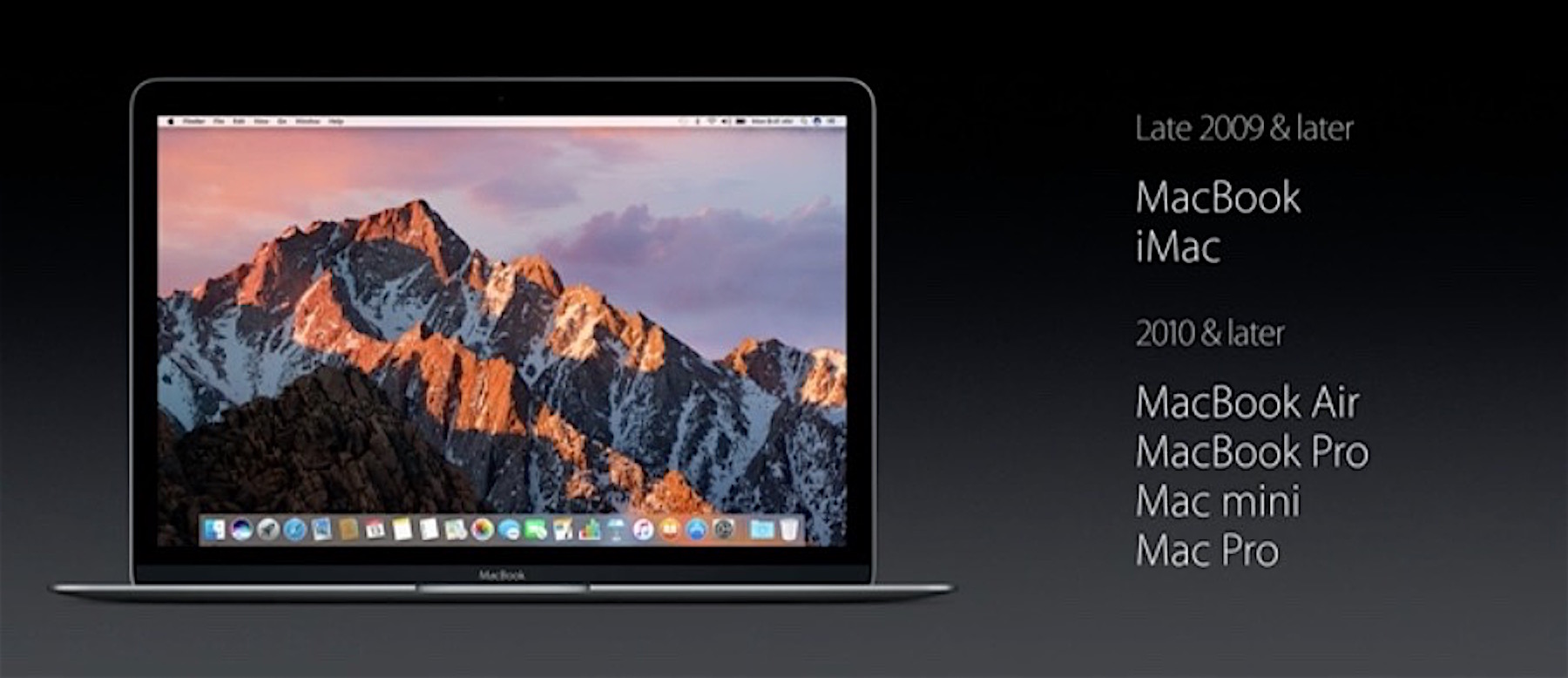
If you like, you can have your Desktop and Documents folder automatically upload to iCloud, so that you don't have to manually cherrypick which files you'd like to save. Starting with Sierra, macOS behaves a lot more like Dropbox.
#Os sierra mac#
In addition, Messages on macOS can display some of the flashy new effects that are specific to iOS 10, including stickers, handwriting, "invisible ink" and "Digital Touch." It's a shame you can't actually send messages from your Mac using these effects (they were some of the most fun things we saw at Apple's WWDC keynote last week), but at least you can see what friends are sending you from their iPhones. The fact that your reaction appears on top of the message bubble means less clutter as you scroll through a message thread. This fall Apple fans will have revamped messages apps for both macOS and iOS 10, with features that include enlarged emoji (three times bigger than before), inline previews of videos and websites and so-called Tapbacks, which let you respond to a message by adding a thumbs-up, heart or other pictorial reaction. To paste that text in, you just need to make sure you're pasting into an app that already supports copy-paste, which, duh: of course you are. Basically, it seems that Sierra is remembering your most recent copy action across all of your devices.

But in fact, once I set up Sierra on two different Macs, each signed into the same iCloud account, I was able to hit command-C (copy) on one machine and command-V (paste) into a TextEdit doc on the other. I was initially skeptical that it would be that easy. As in other instances of Continuity on the Mac, you don't actually need to set anything up just make sure all of the devices you plan to use are signed into the same iCloud account (which, let's face it, they probably already are). Now, users will also be able to copy and paste between their gadgets, whether that be macOS and iOS, Macs only, or from one iOS gadget to another. Universal Clipboardįor a long time now, Apple's big focus with macOS has been around " Continuity" - the ability for apps to work seamlessly across the desktop and mobile devices, with carryover in things like documents and web activity. When the video ends, the pop-out window automatically closes - a convenient touch. Media controls appear when you hover over it, though in my tests I couldn't jump forward or back to a different point in the video. If the window is getting in your way, you can drag it around as well as resize it. (Look for a new icon in the video player that looks like a window popping out of a window.) Because I was testing an early version of the OS, most websites didn't yet support this feature (an API is available to developers), but I was able to take an ESPN video and watch a recap of game seven of the NBA finals, all while opening and closing other apps and windows.
#Os sierra movie#
Sierra brings with it a picture-in-picture mode, wherein you can pop out a movie in iTunes or Safari and watch in a separate stay-on-top window. You can also open files straight from Siri, though in some cases you'll need to follow a link to Finder to see the complete results. Once you find what you want, be it a specific file or a baseball game schedule, you can pin the results to the Notification Center, as well as copy and paste or drag-and-drop them into a different app. Given that this is macOS, Siri has also been optimized to control the operating system itself, giving users the ability to search for files, change their settings and find out more about their machine (how much local and iCloud storage you have left, for instance). Say, if I asked for dry cleaners in my neighborhood, I can then narrow my search to "only on 7th Avenue." Really, I'd expect no less of a digital assistant these days.
#Os sierra how to#
It makes sense that each has a keyboard command, and that they're similar - if you know how to do one, you basically know how to do the other.Īs you'd expect, Siri handles all the same commands that it does on iOS: searching the web, setting reminders, creating calendar events, composing emails and texts, etc., etc. Power users will notice that's very similar to the shortcut you'd use to bring up Spotlight search, which is command-space.

Or - and this is my personal favorite - you can use the keyboard shortcut Fn-spacebar to bring it up without using your cursor. If you like, though, Siri also lives in the tray, in the upper-right area of the screen, right next to where the search bar already lives.
#Os sierra windows#
That lower-left corner is the same place we already expect to find Cortana on Windows 10.

For starters, you'll find the familiar purple Siri shortcut in the Dock, right next to Finder. There are a few places where you can find Siri in macOS, and each feels intuitive.


 0 kommentar(er)
0 kommentar(er)
